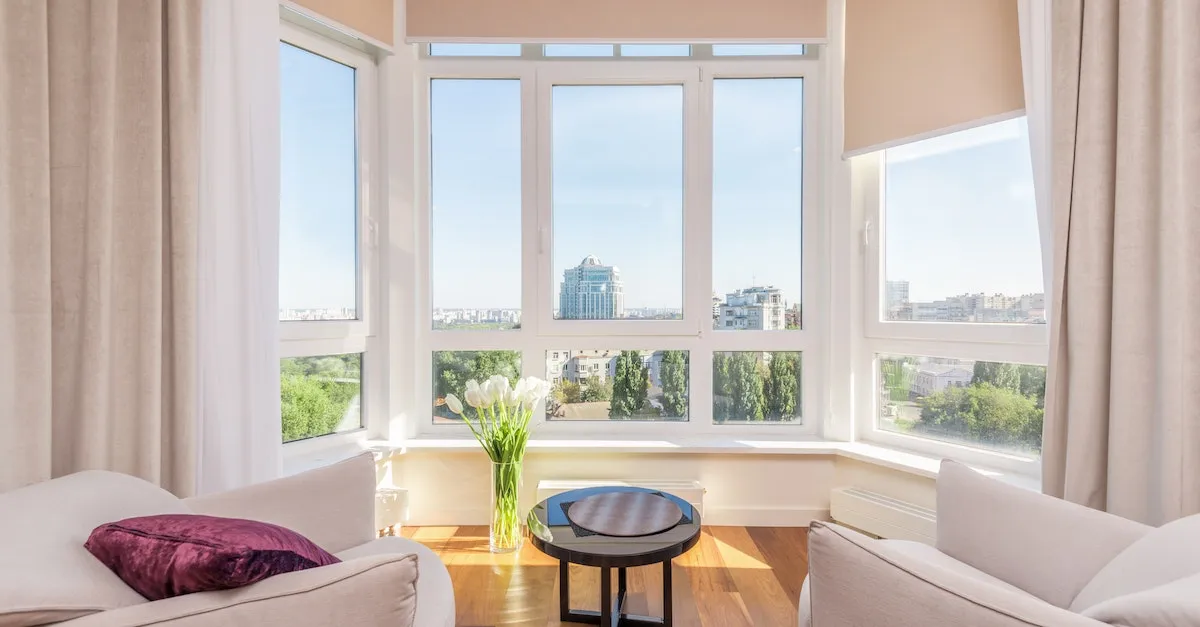Florida Room Vs. Sunroom: What’S The Difference?
Homeowners looking to add extra living space often consider a Florida room or sunroom addition. While these two rooms sound similar, they have distinct differences in terms of design, construction, costs, and uses. If you’re wondering whether to build a Florida room or sunroom, read on to learn how to choose between them.
If you’re short on time, here’s a quick summary: Florida rooms are enclosed, while sunrooms have lots of windows and skylights. Florida rooms are better for expanding living space, while sunrooms create a connection to the outdoors.
This comprehensive guide compares Florida rooms and sunrooms in-depth. We’ll cover the history, typical features, costs, uses, pros and cons, and more for each room type. By the end, you’ll understand how to decide which is better suited for your home and lifestyle.
Origin and History
The concept of adding a room to a house specifically designed to let in natural light and provide a cozy space to enjoy the outdoors dates back centuries. However, the terms “Florida room” and “sunroom” are more recent in origin and have different historical backgrounds.
Florida Room
The term “Florida room” originated in, you guessed it, Florida! In the early 20th century, as Florida became a popular destination for vacationers and retirees, homeowners began adding enclosed rooms to their houses to take advantage of the state’s sunny climate.
These rooms were typically built with large windows or screens to let in light and fresh air while keeping out insects.
Florida rooms were initially designed as a way to enjoy the outdoors without being exposed to the elements. They provided a comfortable space to relax, entertain, and appreciate the surrounding nature. Over time, the popularity of Florida rooms spread beyond the borders of the Sunshine State.
Sunroom
The term “sunroom” is more generic and not tied to a specific location. It is used to describe a room in a house that is primarily designed to let in natural light. Sunrooms can be found in various parts of the world and have different architectural styles.
The concept of a sunroom can be traced back to the conservatories and orangeries of 17th-century Europe. These were structures built to house delicate plants and provide a warm environment during the colder months.
Over time, the purpose of sunrooms evolved to include relaxation, entertainment, and enjoying the beauty of the outdoors.
Today, the terms “Florida room” and “sunroom” are often used interchangeably to refer to a room in a house that allows for ample sunlight and a connection to the outdoors. The key difference lies in the origin and historical context of the terms.
Typical Features and Construction
While both a Florida room and a sunroom are designed to bring the outdoors in, there are some key differences in their features and construction.
Florida Room
A Florida room, also known as a Florida porch or Florida sunroom, is typically an enclosed space that is attached to the main structure of a house. It is designed to provide a comfortable and relaxing space where you can enjoy the beauty of the outdoors while being protected from the elements.
Florida rooms are commonly found in homes in Florida, hence the name, but they can be found in other parts of the country as well.
Some typical features of a Florida room include:
- Large windows or glass walls to maximize natural light
- Sliding or folding glass doors for easy access to the outdoors
- Insulated walls and ceilings to regulate temperature
- Heating and cooling systems for year-round comfort
- Tiled or concrete floors that are easy to clean
Florida rooms are often designed to blend seamlessly with the existing architecture of the house. They can be customized to match the style and aesthetics of the home, making them a seamless extension of the living space.
Sunroom
A sunroom, on the other hand, is typically a separate structure that is attached to the house. It is designed to maximize exposure to sunlight and provide a space to enjoy the outdoors without being exposed to the elements.
Sunrooms are commonly found in homes across the country and offer a versatile space that can be used for various purposes.
Some typical features of a sunroom include:
- Large floor-to-ceiling windows or glass walls for maximum sunlight
- Roof panels made of materials that allow sunlight to filter through
- Insulated walls and ceilings for temperature control
- Optional heating and cooling systems
- Choice of flooring options, such as hardwood or tile
Sunrooms are often designed to be a separate entity from the main house, with their own unique architecture and style. They can be attached to the house or built as standalone structures in the backyard.
It’s important to note that while the terms “Florida room” and “sunroom” are often used interchangeably, there can be variations in their construction and features depending on the builder and region.
It’s always a good idea to consult with a professional contractor or builder to determine the best option for your specific needs and preferences.
Usage and Purposes
Both Florida rooms and sunrooms serve a similar purpose of providing extra space to enjoy the outdoors while still being protected from the elements. However, there are some key differences in their usage and purposes.
Florida Room:
A Florida room, also known as a Florida lanai, is a popular addition to homes in the state of Florida. It is typically a fully enclosed space with large windows that allow for plenty of natural light. Florida rooms are designed to be used year-round, providing a comfortable space to relax and enjoy the beautiful Florida weather, without having to worry about bugs or other pests.
Florida rooms are often used as an extension of the living area, creating additional space for entertaining guests or simply enjoying some quiet time. They can be furnished with comfortable seating, tables, and even a small kitchenette or bar area, making it a versatile space for various activities.
Sunroom:
A sunroom, on the other hand, is a more versatile space that can be found in homes across the country. It is typically a glass-enclosed room that is designed to let in as much natural light as possible.
Sunrooms are often used as a transition space between the indoors and outdoors, allowing homeowners to enjoy the beauty of nature while still being protected from the elements.
Sunrooms can be used for a variety of purposes, depending on the homeowner’s preferences. Some people use them as a cozy reading nook or a home office, while others transform them into a green oasis filled with plants and flowers.
They can also be used as a dining area or a place to entertain guests, especially during the warmer months.
Comparison:
The table below summarizes the main differences between a Florida room and a sunroom:
| Florida Room | Sunroom |
|---|---|
| Typically found in Florida homes | Can be found in homes across the country |
| Fully enclosed with large windows | Glass-enclosed to let in natural light |
| Used year-round | Used depending on homeowner’s preference |
| Often an extension of the living area | Can be used for various purposes |
Whether you choose a Florida room or a sunroom, both options offer a unique and enjoyable space to connect with nature while still being comfortable and protected. The decision ultimately comes down to your personal preferences and the specific needs of your home.
For more information on Florida rooms and sunrooms, you can visit HomeAdvisor or Better Homes & Gardens.
Cost Differences
When it comes to comparing the cost of a Florida room and a sunroom, several factors come into play. The overall cost will depend on the size, materials used, and additional features included in the construction. However, there are some general cost differences to consider.
Construction Materials
The materials used in the construction of a Florida room or a sunroom can significantly impact the cost. Florida rooms typically have a more sturdy and durable construction, often using materials such as concrete or brick for the walls.
On the other hand, sunrooms are often built with lightweight materials such as aluminum or vinyl. These materials are less expensive, making sunrooms a more affordable option.
Additional Features
The cost difference between a Florida room and a sunroom can also be influenced by the additional features included in the design. Florida rooms are often equipped with features like HVAC systems, plumbing, and electrical wiring. These extra amenities increase the overall cost of construction.
Sunrooms, on the other hand, may be simpler in design and not require the same level of additional features.
Permits and Regulations
Another factor that can affect the cost of building a Florida room or a sunroom is obtaining the necessary permits and complying with local regulations. Depending on your location, there may be specific requirements for building a sunroom or a Florida room.
These requirements can vary in terms of cost and complexity, which may impact the overall cost of the project.
It is important to note that the costs mentioned here are general guidelines, and prices can vary depending on various factors. To get an accurate estimate for your specific project, it is recommended to consult with a professional contractor who can assess your needs and provide a detailed cost breakdown.
Climate Considerations
When it comes to deciding between a Florida room and a sunroom, one of the key factors to consider is the climate in which you live. Both types of rooms are designed to bring in natural light and create a space that allows you to enjoy the outdoors, but they have different features that make them better suited for certain climates.
Hot and Humid Climates:
If you live in a hot and humid climate like Florida, a Florida room may be the better option for you. Florida rooms are specifically designed to withstand the intense heat and humidity of the region. They are typically built with materials that are resistant to mold and mildew, and they often have built-in ventilation systems to help keep the room cool and comfortable.
Additionally, Florida rooms often have high-performance glass windows that can block out harmful UV rays and reduce heat transfer, helping to keep the room cooler and reducing the need for excessive air conditioning.
These features make Florida rooms a great choice for those who want to enjoy the benefits of an outdoor space without having to deal with the oppressive heat and humidity.
Moderate Climates:
On the other hand, if you live in a moderate climate with milder temperatures and less humidity, a sunroom may be a better fit for your needs. Sunrooms are typically constructed with large windows that allow for maximum natural light to enter the space.
This can be especially beneficial in areas where the climate is not as hot and humid, as it allows you to enjoy the sunshine without the need for excessive cooling systems.
Sunrooms are also versatile in terms of their use. They can be used as a space for relaxation, entertaining guests, or even as a home office. With the right design and insulation, sunrooms can be comfortable year-round, allowing you to enjoy the beauty of the outdoors no matter the season.
Comparing the Two:
When comparing Florida rooms and sunrooms, it’s important to consider the specific climate of your location. Florida rooms are specifically designed for hot and humid climates, while sunrooms are more suited for moderate climates.
However, both types of rooms offer the benefits of natural light and a connection to the outdoors.
Ultimately, the decision between a Florida room and a sunroom will depend on your personal preferences, budget, and the climate in which you live. It may be helpful to consult with a professional contractor or architect who can provide guidance and help you make the best decision for your specific needs.
For more information and inspiration, you can visit websites like Sunroom.com or FloridaRoofandRemodeling.com for expert advice and design ideas.
Conclusion
Both Florida rooms and sunrooms have appealing benefits, but the ideal option depends on your climate, budget, and intended use. Now that you understand the critical differences between these patio room styles, you can make an informed decision when choosing one for your home. With a well-designed Florida room or sunroom, you’ll be able to enjoy added living space and a stronger indoor-outdoor connection.








